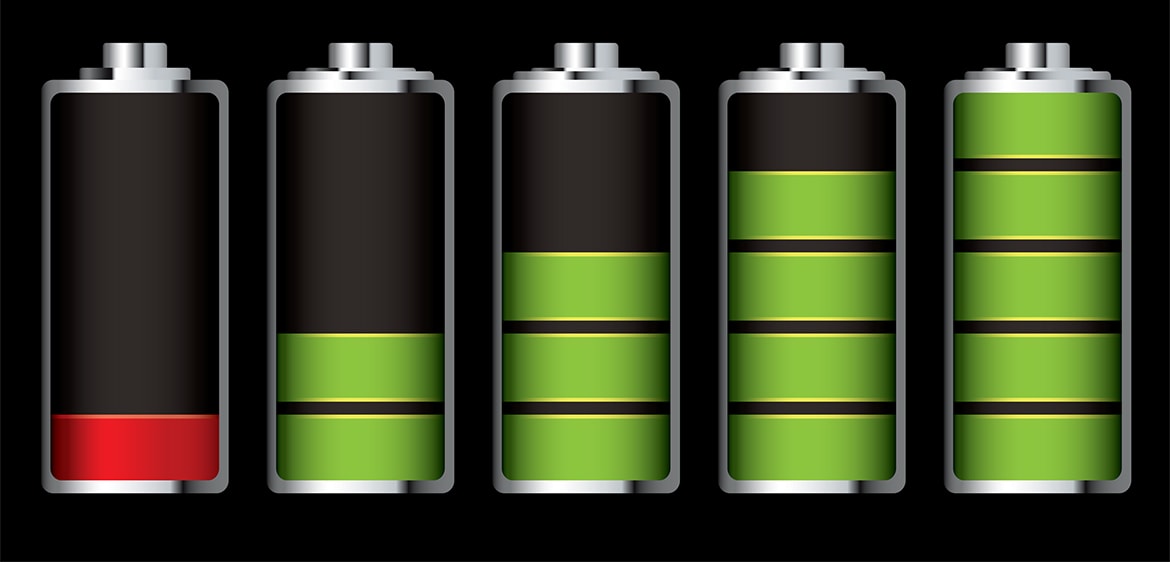Battery Safety
- Batteries made from lead or other heavy metals can be very large and heavy and can cause injuries to personnel or damage to equipment if improperly handled.
- When using lithium batteries, a “Lith-X” or D-Class fire extinguisher should always be available. Water-based extinguishers must not be used on lithium of any kind, since water will react with lithium and release large amounts of explosive hydrogen.
- Before abusively testing a battery, contact the manufacturer of the battery to identify any potential dangers.
- Vented batteries must be properly ventilated. Inadequate ventilation may result in the build up of volatile gases, which may result in an explosion or asphyxiation.
- Do not attempt to solder directly onto a terminal of the battery. Attempting to do so can damage the seal or the safety vent.
- When disconnecting a battery from the device it is powering, disconnect one terminal at a time. If possible, first remove the ground strap at its connection with the device’s framework. Observing this sequence can prevent an accidental short circuit and also avoid risking a spark at the battery. In most late-model, domestic automobiles, the battery terminal labeled “negative” is usually connected to the automobile’s framework.
- When recharging batteries, use a charging device that is approved for that type of battery. Using an approved charging device can prevent overcharging or overheating the battery. Many chargers have special circuits built into them for correctly charging specific types of batteries and will not work properly with other types.
- Do not use secondary (rechargeable) batteries in smoke detectors. Secondary batteries have a high self-discharge rate. Primary batteries have a much longer shelf life and are much more dependable in emergencies. Consult the smoke-detector’s user manual for the recommended battery types.
- Do not attempt to refill or repair a worn-out or damaged battery.
- Do not allow direct bodily contact with battery components. Acidic or alkaline electrolyte can cause skin irritation or burns. Electrode materials such as mercury or cadmium are toxic. Lithium can cause an explosion if it comes into contact with water. Other components can can cause a variety of short-term (skin irritation and burns) or long-term (nerve damage) problems.
- Do not lick a 9V battery to see if it is charged. You will, of course, be able to determine whether or not the battery is charged, but such as test may result in a serious burn.
- Do not dispose of batteries in a fire. The metallic components of the battery will not burn burning electrolyte may splatter, explode or release toxic fumes. Batteries may be burned only in industrial incinerators that are approved for the purpose.
- Do not carry batteries in your pocket. Coins, keys or other metal objects can cause a short circuit resulting in extreme heat, acid leakage or an explosion.
- Do not wear rings, metal jewelry or metal watchbands while handling charged cells. Severe burns can result from accidentally short circuiting a charged cell. Wearing gloves can reduce this risk.
- Do not use uninsulated tools near charged cells. Do not place charged cells on metal workbenches. Sever arcing and overheating can result if the battery’s terminals are shorted by contact with such metal objects.
Extending Battery Life
- Read the instructions for the device before installing batteries. Be sure to orient the battery’s positive and negative terminals correctly when inserting them.
- Use only the type of battery that is recommended by the manufacturer of the device.
- The performance of batteries can be greatly reduced at low temperatures. However, this effect is only temporary and the batteries can be completely revived upon warming up to normal operating temperature.
- Store batteries in a cool dark place. This helps extend their shelf life. Refrigerators are convenient locations. Although some battery manufacturers say refrigeration has no positive effect on battery life, they say it has no negative effect either. Do not store batteries in a freezer. Always let batteries come to room temperature before using them.
- Store batteries in their original packing boxes or packaging materials. The battery manufacturer has designed the packaging for maximum shelf life.
- When storing battery-powered devices for long periods (more than a month), remove the batteries. This can prevent damage to the device from possible battery leakage, and the batteries can be used for other applications while they are still “fresh”.
- Use a marking pen to indicate, on the battery casing, the day and year that the battery was purchased. Also, keep track of the number of times the battery has been recharged. Avoid writing on or near battery terminals.
- Do not mix batteries from different manufacturers in a multi-cell device (eg. a flashlight). Small differences in voltage, current and capacity between brands can reduce the average useful life of batteries.
- When using secondary batteries in a multi-cell device, try to use batteries of the same age and similar charging histories. This kind of matching will make it more likely that all the batteries in the set will discharge at the same rate, putting less stress on any individual battery.
- When using single-cell rechargeable NiCd batteries, be sure to discharge the cell completely before recharging it, thus counteracting the “memory effect”.
- A NiCd battery that has been degraded by the memory effect may be reconditioned by several successive cycles of completely discharging, then fully recharging it.
- Do not use batteries in high temperature situations except where the battery is designed for that purpose. Locate batteries as far away from heat sources as possible. The electrical potential of the battery will degrade rapidly if it is exposed to temperatures higher than those recommended by the manufacturer.







